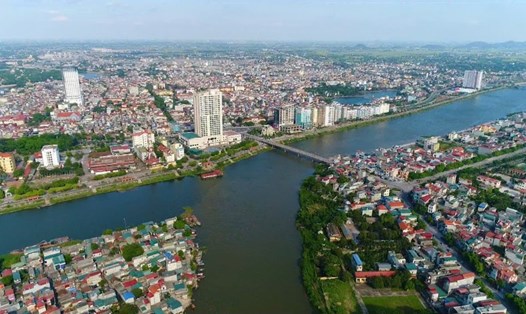In Conclusion No. 126-KL/TW, the Politburo and the Secretariat requested to study the orientation of continuing to arrange the removal of intermediate administrative levels (district level); orientation to merge a number of provincial administrative units.
Information about the orientation of merging and arranging a number of provincial-level administrative units is attracting public attention.
According to Lao Dong reporter's research, Resolution No. 1211/2016/UBTVQH13 of the National Assembly Standing Committee on standards for administrative units and classification of administrative units, amended and supplemented by Resolution 27/2022 of the National Assembly Standing Committee clearly states the standards of the province.
In which, mountainous and highland provinces have a population standard of 900,000 people or more and a natural area of 8,000 km2 or more.
The remaining provinces have standards for population of 1.4 million people or more and natural area of 5,000 km2 or more.
The number of district-level administrative units under the province, according to the resolution, must be from 9 units or more, including at least one city or one town.
Based on statistics from the General Statistics Office as of 2024, for mountainous provinces and cities, there are 8 provinces that do not simultaneously meet both criteria on area and population according to the Resolution of the National Assembly Standing Committee: Bac Kan (0.3 million people, 4,859.96 km2), Tuyen Quang (0.8 million people, 5,867.90 km2), Lao Cai (0.8 million people, 6,364.00 km2), Dak Nong (0.7 million people, 6,509.00 km2), Cao Bang (0.5 million people, 6,700.30 km2), Yen Bai (0.7 million people, 6,887.70 km2), Ha Giang (nearly 0.9 million people, 7,929.50 km2), Hoa Binh (nearly 0.9 million people, 4,591.00 km2).
For other provinces and cities, there are 13 provinces that do not simultaneously meet both criteria on area and population: Quang Tri (0.6 million people, 4,739.80), Hau Giang (0.8 million people, 1,621.80 km2), Ha Nam (nearly 0.9 million people, 860.90 km2), Bac Lieu (1 million people, 2,669.00 km2), Ninh Binh (0.9 million people, 1,387.00 km2), Tra Vinh (1 million people, 2,358.20 km2), Vinh Long (1.1 million people, 1,475.00 km2), Ba Ria - Vung Tau (1.2 million people, 1,980.80 km2), Vinh Phuc (1,2 million people, 1,235.20 km2), Tay Ninh (1.2 million people, 4,041.40 million km2), Soc Trang (1,3 people, 3,311.80 km2), Yen Yen city (1,3 million people, 930.3 million people, 2.392 km2).
Vietnam currently has 63 provinces and cities (57 provinces and 6 centrally-governed cities are Hanoi, Ho Chi Minh City, Hai Phong, Da Nang, Can Tho and Hue).
In April 1975, Vietnam had 72 provincial-level administrative units (the North had 25 units and the South had 47 units).
After the merger and separation process, from 2008 to present, Vietnam has maintained the number of administrative units including 63 provinces and cities.
Regarding the merger and arrangement of provincial-level administrative units, in a document sent to the Ministry of Public Security at the end of November 2024, the Ministry of Home Affairs said that the merger of provincial-level administrative units is not only based on the criteria of natural area and population size, but also based on other criteria such as national security and defense, sovereignty protection, geopolitical position, regional and national planning, and culture of the community. Especially to ensure stability for socio-economic development.
Hanoi and Ho Chi Minh City alone are the two cities with the largest population, respectively 8.5 and 10 million people.
As of June 2024, the report of the Ministry of Home Affairs shows that our country has 705 district-level administrative units (523 districts, 46 counties, 51 towns, 84 provincial cities and one centrally-run city).
Along with that, Vietnam has 10,595 commune-level administrative units (8,192 communes, 1,784 wards, 619 towns).











